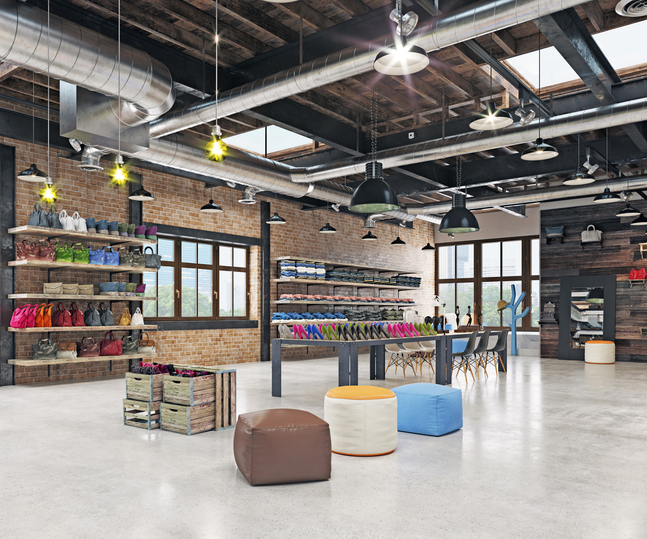Retail Facility Management is Full of New Priorities — and Opportunities
From major large-format retail brands to retailers with smaller stores supplemented by a larger footprint, facility leaders navigating retail maintenance management for their organizations have quite a bit on their plates today. With the new year rapidly approaching, the top item on everyone’s list is establishing budgets, planning various new initiatives, and identifying ways to control costs amid economic uncertainty.
Retail facility leaders in particular have the challenge of navigating this across dozens, hundreds, or even thousands of locations. Each location offers its own challenges — from geographic variables to higher strain on systems such as HVAC, lighting, plumbing, and FLS.
On top of this, sustainability remains a critical focus. With raw materials, labor, equipment lead times, and their associated costs posing even more difficulties, the need to reduce energy and fuel consumption and maximize efficiency wherever possible remains a key strategic priority — and likely will well into the future.
And of course, leaders must be ready to address the elephant in the room — for this and every other industry. AI is also making headway when it comes to retail maintenance management, and in the broader industry as well. While adoption is still in the early stages, experts predict that AI tools will enable facility leaders to accelerate decision-making, conduct faster analysis of asset and building trends, and more.
Despite these concerns dominating facility leaders’ mindshare, leaders cannot afford to let retail maintenance management itself take a backseat. There are a number of essentials to a successful retail facility management program that must be in place and efficiently managed 24/7/365.
Five Core Components in a Retail Maintenance Management Program
- Complete location coverage — This should go without saying, but ensuring complete service coverage for all stores is paramount. However, this is not easy to achieve, especially when the job of finding service vendors is managed by internal teams. Identifying, onboarding, and communicating with vendors across multiple service lines, for every location, is almost impossible for a small facility team. Working with an aggregator is essential here, as they have an established national network of commercial service vendors.
- Service call and budget reporting — Understanding how retail maintenance management is progressing — location by location, call by call — is critical to success. If certain areas or service lines are experiencing repeat callbacks or other difficulties, leaders must be able to pinpoint these and make decisions. Measuring technician KPIs and other facility management metrics must be consistent. The same goes for the financial side — are budgets, both capital and operational, achieving what needs to be done? Are resources being constrained or pulled where they were not meant to be used?
- CapEx prioritization — Which sounds preferable: 1) to wait until specific assets run to failure at an unforeseen point, and then fix them using OpEx resources (that are likely limited), or 2) invest in fixing them now using organizational CapEx resources before they create costly issues that must be fixed reactively with OpEx funds? One option leads to headaches and financial strain, and one does not.
- Utility rebate strategy — Utilities, municipalities, states, and the federal government all offer lucrative incentives for energy reduction and energy management solutions. These programs require careful management on two ends: 1) up front in implementing the technology or processes required, and 2) collecting and managing all documentation needed to receive the rebate. Working with an experienced partner will go a long way in streamlining this process.
- Centralized asset management — Last but not least, how retail maintenance management is literally managed influences the success of the program and determines whether time can be spent elsewhere. Organizing all asset information into a single place, having all program data and documentation available, and understanding trends over time are table stakes. Many facility leaders lack these management tools, unfortunately, but a proven third-party partner adds these capabilities simply through the partnership.
Do You Have These Essentials in Place?
If not, now is the time to consider partnering with a retail maintenance management aggregator. Unlike individual self-performing companies that perhaps only specialize in one or two service disciplines, an aggregator consolidates all facility management services into one partnership. Some add self-perform capabilities to that, but others execute services using a national network of proven commercial service vendors.
For leaders, this adds significant value in that all of the above needs are immediately added to existing capabilities — freeing up time and mindshare to navigate the challenges facing the industry and to identify new strategic opportunities for the business. And for retailers, all of that translates into greater revenue.
As an aggregator, CLS Facility Services partners with retailers nationwide for all of these services and more. We have worked with numerous companies nationwide for decades, helping them achieve measurable success with their facility asset maintenance needs. Connect with us to learn how we can put these capabilities to work for you.



